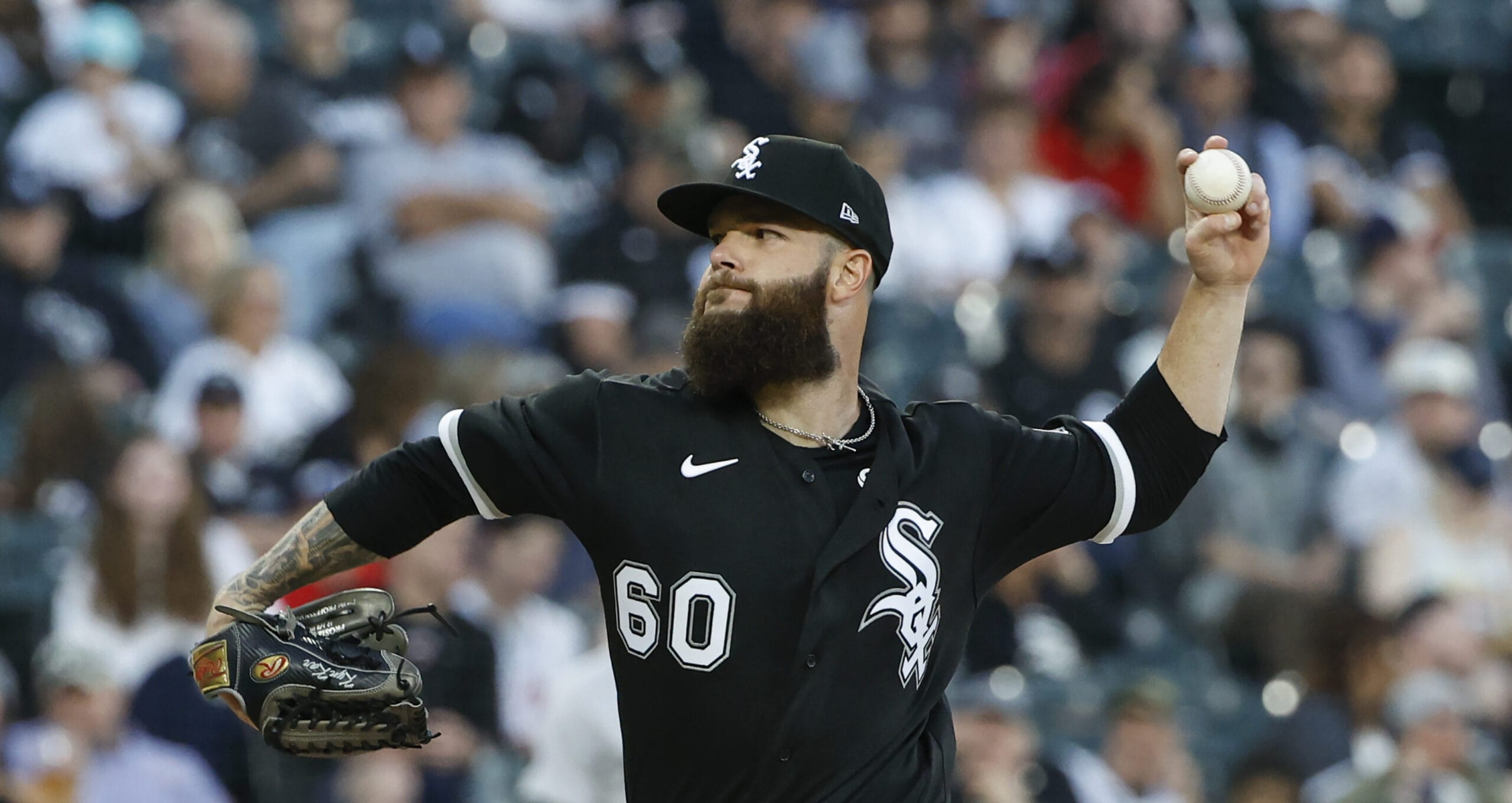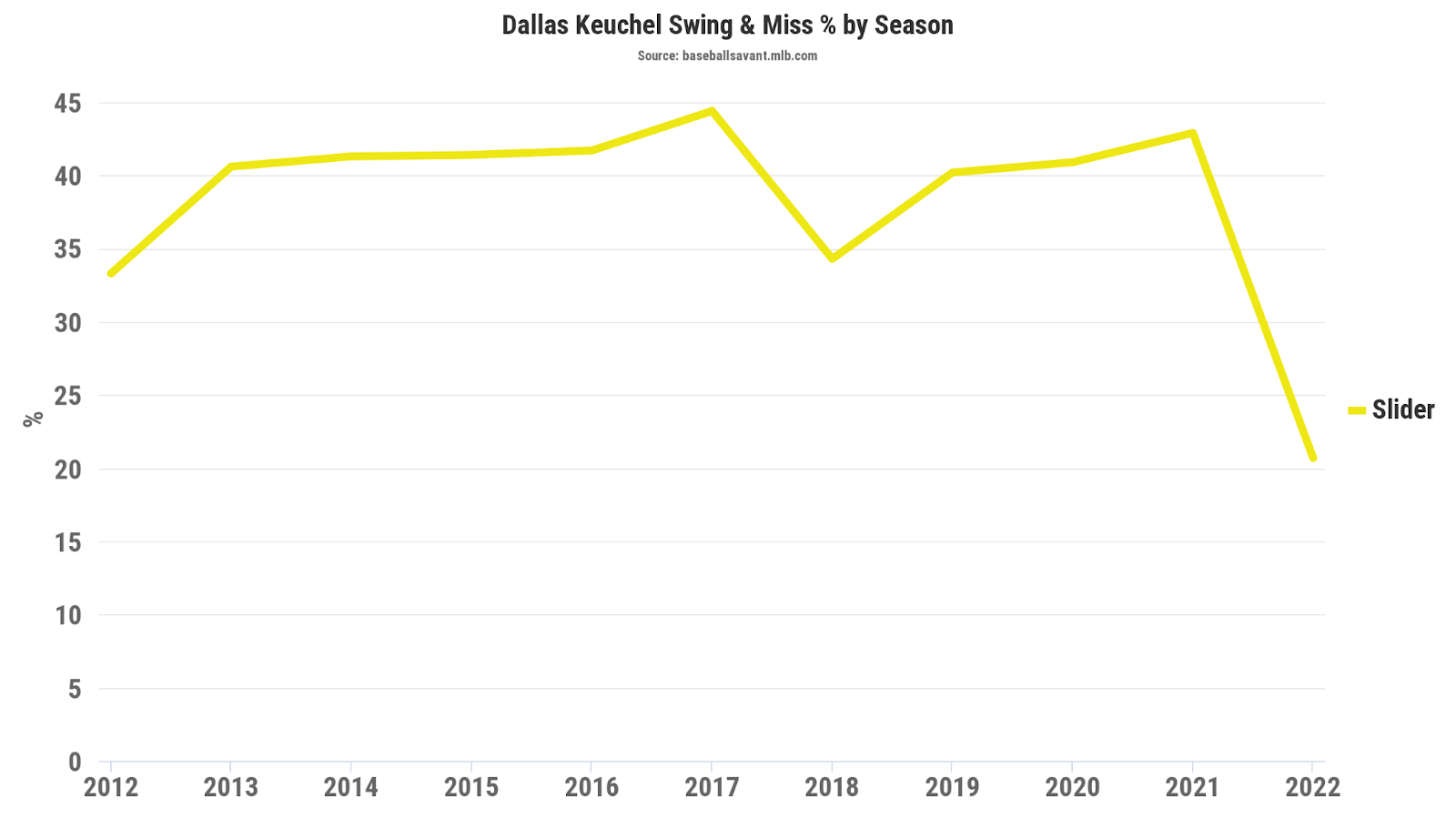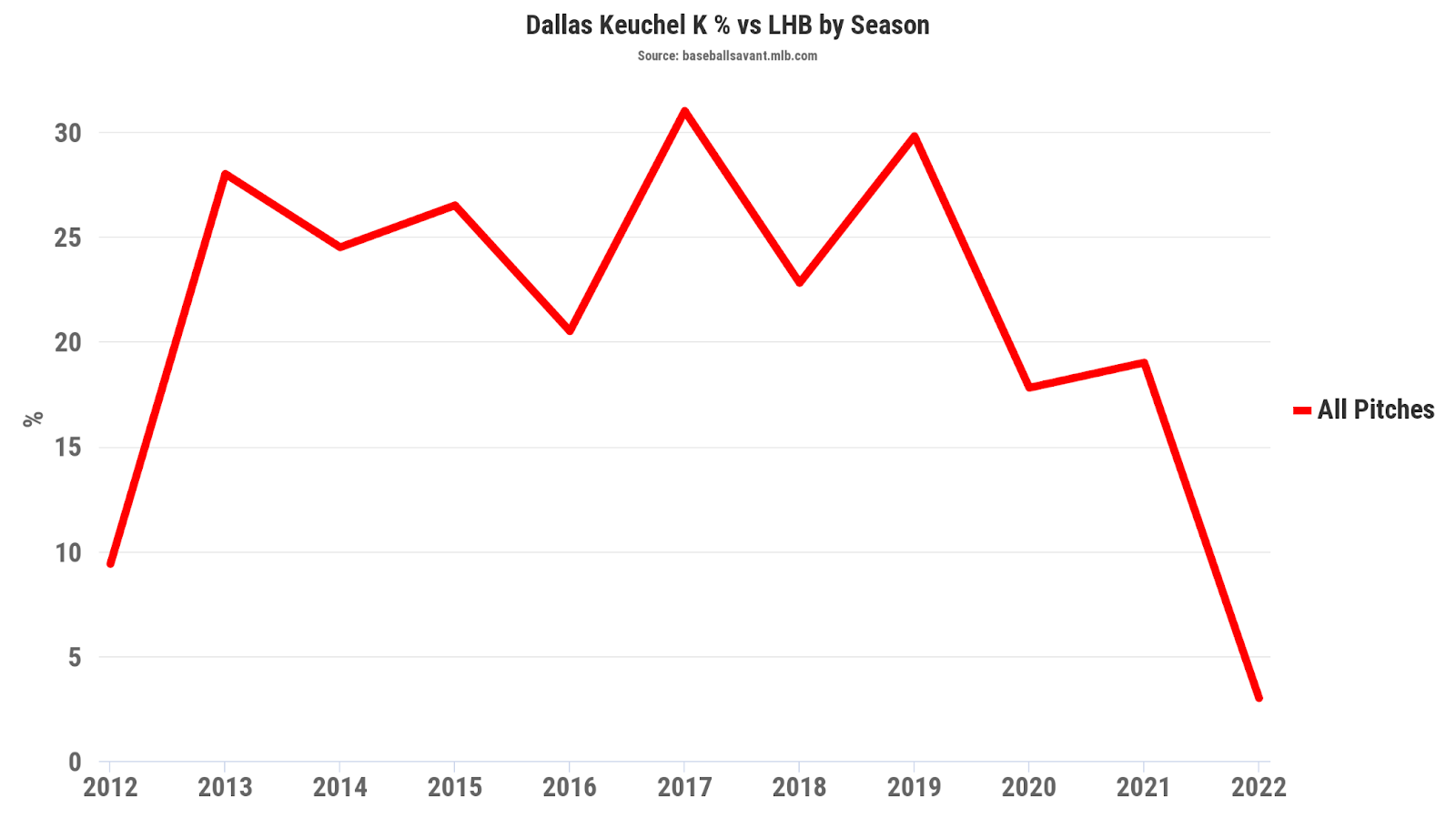© 2025 ALLCITY Network Inc.
All rights reserved.

Despite an unsightly 7.88 ERA in eight starts this season for the White Sox, it hasn’t been that long since Dallas Keuchel was an elite — or at least above-average — major-league starting pitcher.
As recently as 2020, he posted a 1.99 ERA, 1.09 WHIP and .217 batting average against, finishing fifth in Cy Young voting. You may have some recollection of his 2015 season that saw an unknown 27-year-old win the AL Cy Young Award.
After signing a minor-league deal with the Diamondbacks, Keuchel made his first appearance in his new organization, but it didn’t happen in the big leagues. It happened in an Arizona Complex League game, facing a group of mostly 18- to 21-year-olds from the Rockies organization. Keuchel logged five innings, allowing four runs on seven hits with a walk and four strikeouts.
Nearly nothing has gone right for Keuchel in 2022, but the Diamondbacks have two things working in their favor: Keuchel’s determination, which appears to be at an all-time high, and Brent Strom, who reunited with Keuchel in Arizona after helping him win the aforementioned Cy Young award with the Houston Astros.
So, why is Keuchel struggling in 2022, and what would it take for him to don a D-backs uniform? I’ll attempt to answer each of those questions, starting with the former.
Velocity is bound to come up in any conversation about a pitcher in his mid-30s, so let’s start there. Keuchel has all but cut out his four-seam fastball, throwing just one over his eight starts with the White Sox. Diminished velocity is probably a big reason for that. It’s never been a great pitch for him anyway.
Keuchel is leaning primarily on his sinker now, throwing it 47 percent of the time so far this season. That’s a significant leap from 2020 and 2021, but still less than his 50.3-percent sinker usage rate in 2015.
Unfortunately for Keuchel, it appears to be a pretty different pitch now than it was then. Keuchel’s average sinker velocity has dipped to a career-low 87.1 MPH in 2022, compared to 90 MPH back in 2015. His average spin rate on the pitch has also dropped from 2,044 to 1,929. He still has a healthy 64.3-percent ground-ball rate on his sinker, but that’s a far cry from his 72.2-percent ground-ball rate in 2015.
Overall, hitters are swinging at his sinker less and doing significantly more damage when they do. It’s difficult to pinpoint any causes other than diminished velocity and spin rates. The pitch’s movement is fairly similar to that of past seasons.
That brings us to Keuchel’s slider, which has historically been his best out-pitch against left-handed hitters. This year, his swing-and-miss rate on the pitch has seen a dramatic drop.

As a result, lefties are batting .429 against him this season with a .571 slugging percentage. Moreover, despite being a left-handed pitcher, Keuchel has recorded just one strikeout against left-handed hitters in eight starts.

Ironically, Keuchel has actually fared better against righties this season. They are batting .322 with a .513 slugging percentage this season.
Those numbers may not sound much better, but batted ball metrics suggest he’s been unlucky in that regard. His expected opposing batting average against righties is .262 and his expected opposing slugging percentage against righties is .413. Both of those metrics are running high across the league, meaning that if anything, the actual figures should be lower.
Keuchel’s relative success against righties is primarily due to his changeup, which he has used more the past three seasons. He has used it 26.8 percent of the time in 2022, which is higher than every pitch outside of his sinker.
Opposing hitters are batting .261 with a .304 slugging percentage against his changeup to start the season. His swing-and-miss rate on the pitch is 23.2 percent, which is his highest on any pitch. That’s not particularly high, but recall that Keuchel has never relied on swing-and-miss to be effective. His strikeout rate has never reached 24 percent in his career — not even when he won the Cy Young award.
Keuchel’s other main offering is his cutter, which he uses against both lefties and righties. It doesn’t generate much swing-and-miss, and opposing hitters have hit it hard — to the tune of a .419 batting average and a .935 slugging percentage in 2022. It’s worth questioning if Keuchel should throw it less, or even eliminate it.
With all this in mind, it’s understandable that teams were hesitant to offer Keuchel a major-league deal. It’s been a tough year on the mound. Nonetheless, it’s worth noting that he’s in the 72nd percentile in hard-hit rate, and he’s been better than his 7.88 ERA indicates.
So, what does this mean for the D-backs? First, it’s important to note that this is a low-risk situation for them. Should Keuchel spend time in the big leagues, the Diamondbacks are only on the hook for the league minimum.
Second, the Diamondbacks are under no obligation to bring Keuchel up to the majors in 2022 — but they may lose him if they don’t. USA Today’s Bob Nightengale reported that Keuchel has opt-outs on June 25, July 3 and July 11. That means Keuchel could leave in less than two weeks if he doesn’t pitch in the majors by then.
It wouldn’t be shocking to see that happen. The D-backs are in a much better position in 2022 with regard to starting pitch depth. They don’t desperately need Keuchel on the big-league roster immediately — although a recent injury to Humberto Castellanos certainly leaves the door open.
From Keuchel’s perspective, it may be hard to find a better situation than reuniting with the pitching coach who helped transform his career eight years ago. Perhaps Strom can help Keuchel seize what is left of his pitching career.
Top photo: Kamil Krzaczynski/USA TODAY Sports
Follow Jesse Friedman on Twitter
Get Arizona's Best Sports Content In Your Inbox!Become a smarter Arizona sports fan with the latest game recaps, analysis and exclusive content from PHNX's writers and podcasters!
Just drop your email below!
Comments
Share your thoughts
Join the conversation



